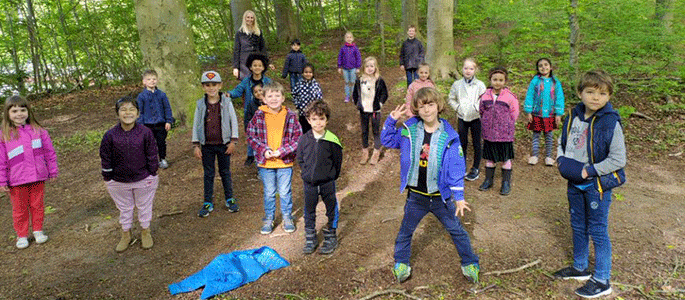
How Cambridge’s flexibility has guided a small start-up school to international success
Jenny Rohd-Thomsen was a founding teacher at Aalborg International School in 2001 and became Head of Centre when it became a department of another local school, Skipper Clement Skolen, in 2004. She has seen how Cambridge programmes have helped build parents’ confidence in the whole school and allowed it to develop from a small start-up to the successful bilingual international school it is today.
Aalborg International School, Denmark started up in 2001 as a result of demand from the regional business community for an English language-based education to support the recruitment of specialised workers from overseas. It began with 13 students and struggled to exist in the first three years.
Skipper Clement Skolen is an old private school in Aalborg. In 2004 it had around 450 students. With foresight and to strengthen its market position, it took on the international school as a department. Now the whole school is thriving, with 850 students overall and 230 in the international department. These students come from all over the world and most have English as a second language.
'When we opened, the first thing we did was to enrol the international department as a Cambridge International centre' explains Jenny. 'We started offering Cambridge IGCSE exams from 2003. Cambridge Primary and Lower Secondary programmes for English, Maths and Science were then being developed and we adopted them as soon as we could in 2006. In 2020, we also introduced Cambridge Primary Global Perspectives.'
Flexible and cost-effective
'The Cambridge programme is very flexible and that is critical – you can pick and choose which parts of the Cambridge Pathway you want to use so it fits your situation, and then add other parts later. This helps financially and practically. That’s very different from some other programmes that are very fixed.
'In the beginning, as a small start-up school, we had multi-level classes with children from up to five year groups in one class. We used Cambridge English, Maths and Science as our core subjects and we assessed and taught them at an age-appropriate level. In all other subjects, we ran with rotation courses that taught the students as a group.
'The Cambridge Primary and Lower Secondary curricula for English, Science and Maths were revised in 2021, so we are now going through a process of familiarising ourselves with the updated programmes. Our teachers have had time to study the changes and plan for the future. One new feature in the Mathematics curriculum is "Thinking and Working Mathematically". We think it is good to teach "thinking about thinking” so that students learn to evaluate how they learn and apply their skills.'
A broad and balanced curriculum
'Now that our school has developed and we have new facilities, we are starting to adopt some of the new Cambridge Primary and Lower Secondary subjects, including Art & Design. Again, that's the flexibility that I think is so important when you are using Cambridge.
'Each subject helps to develop different kinds of skills and this is especially true of Art & Design. Different students respond to different subjects, so having more breadth and balance in the curriculum means we have a better chance of catering for all students’ interests.
'We are also introducing Cambridge Lower Secondary Digital Literacy. We believe it is really important for our young students to learn to reflect on the visually transmitted messages they are subjected to via online media and other sources. They not only learn the skills they need for online learning but also learn to talk about what it means to be a responsible and considerate user of social media.'
Clear and smart objectives
'The Cambridge curriculum gives our teachers structure. This is important for multi-level teaching – we need to be able to plan carefully in advance.
'The curriculum is straightforward and I don’t mean simple. The learning objectives are very smart – they are specific, measurable and realistic. They also avoid national bias – we need to be able to have an international focus and bring in the local context.
'The assessments for Cambridge Primary and Lower Secondary are really helpful. The Cambridge Progression Tests, marked by teachers in the school, and the Cambridge Checkpoint external tests help us to tell parents how their child is progressing and when their child is struggling in some areas.
'Previously, Cambridge International only offered Checkpoint for English as a first language. Now it’s available for English as a second language too – that’s a great help for us, when students are new to English and have never studied it before. The objectives are attainable and it’s very important for children to feel that they can achieve benchmarks.'
Independent and externally assessed exams
'It was particularly important for us to choose an independent, externally marked exam system that was of high quality and well recognised. When we started, it helped parents to build confidence in us as an international school.
'One thing we also do as a school is to take what we call checklists – key learning objectives from the curriculum. Our teachers can continuously assess against those checklist learning objectives and use them when they have parent–teacher conferences. That’s been very successful.
'During the pandemic, Cambridge International has made a good job of supporting schools and being flexible to suit different situations around the world. In Aalborg, we were able to get through a full six-week exam schedule with only one day affected by a lockdown and students were able to get all their results. We consider that an achievement given the impacts of the pandemic.'